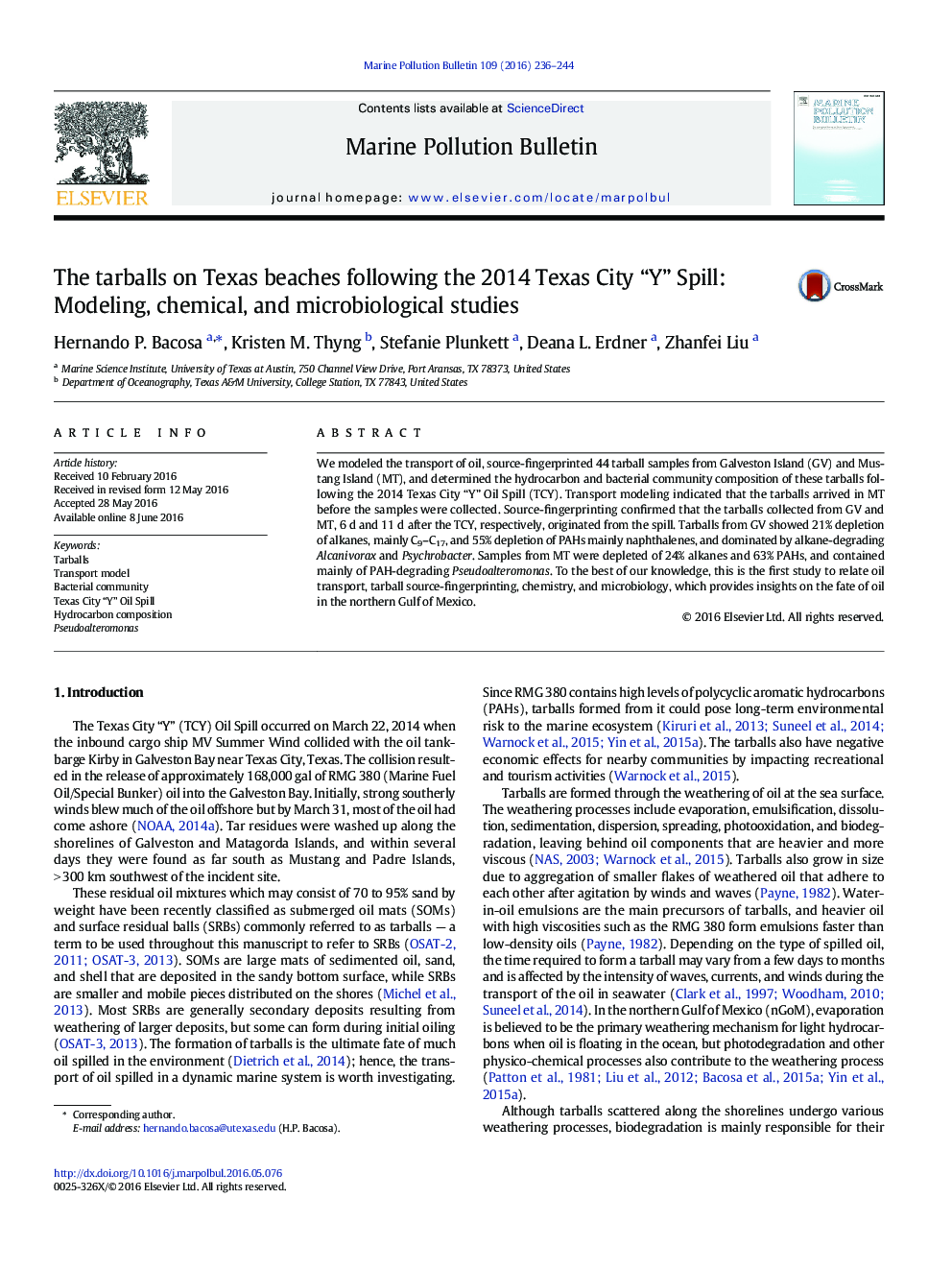| Article ID | Journal | Published Year | Pages | File Type |
|---|---|---|---|---|
| 4476397 | Marine Pollution Bulletin | 2016 | 9 Pages |
•Modeled the transport of oil from Galveston Bay to Mustang Island, Texas•Identified the tarballs derived from Texas City “Y” Oil Spill•Determined the changes in hydrocarbon composition in tarballs•Revealed that Alcanivorax and Pseudoalteromonas are associated with tarballs•Provided an integrated approach to evaluate the fate of spilled oil
We modeled the transport of oil, source-fingerprinted 44 tarball samples from Galveston Island (GV) and Mustang Island (MT), and determined the hydrocarbon and bacterial community composition of these tarballs following the 2014 Texas City “Y” Oil Spill (TCY). Transport modeling indicated that the tarballs arrived in MT before the samples were collected. Source-fingerprinting confirmed that the tarballs collected from GV and MT, 6 d and 11 d after the TCY, respectively, originated from the spill. Tarballs from GV showed 21% depletion of alkanes, mainly C9–C17, and 55% depletion of PAHs mainly naphthalenes, and dominated by alkane-degrading Alcanivorax and Psychrobacter. Samples from MT were depleted of 24% alkanes and 63% PAHs, and contained mainly of PAH-degrading Pseudoalteromonas. To the best of our knowledge, this is the first study to relate oil transport, tarball source-fingerprinting, chemistry, and microbiology, which provides insights on the fate of oil in the northern Gulf of Mexico.
Graphical abstractFigure optionsDownload full-size imageDownload as PowerPoint slide
